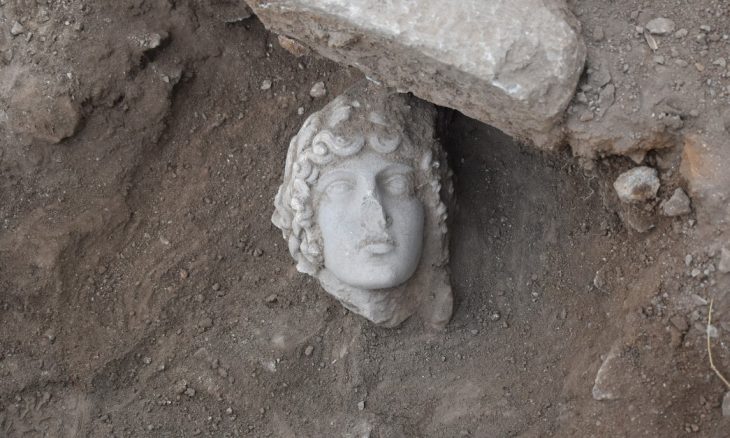A team of archaeology students from Aristotle University of Thessaloniki, Greece, unearthed a significant discovery during their excavation at the Philippi Kavala archaeological site. Amongst other finds, they brought to light a rare head of the god Apollo, dating back to the 2nd or early 3rd century AD.
Led by Professor Natalia Poulos, a Byzantine Archaeology specialist, the excavation crew comprised fifteen students – a mix of undergraduates, master’s students, and PhD candidates – alongside Assistant Docent Anastasios Tantsis and Professor Emeritus of Byzantine Archaeology, Aristotle Mendzo.
This year’s dig focused on an area east of the city’s southern main road (decumanus), where it intersects with the north-south axis. Here, the archaeologists unearthed a continuation of the marble-paved road, along with a bronze coin of Emperor Leo VI (886-912 AD). This coin provided valuable clues about the timeframe during which the road remained in use.
A key finding from last year’s excavation hinted at the presence of a richly decorated fountain at the convergence point of the two roads. This year’s discoveries solidify this theory and offer a clearer picture of its form and purpose.
In 2022, the team unearthed part of the fountain’s ornate decorations, including a captivating statue depicting a youthful Hercules. The recent excavation (2023) yielded the head of another statue – a beardless male figure adorned with a magnificent crown topped by a laurel wreath. The artistic mastery of this head suggests it belonged to a statue of Apollo, the Greek god of music, poetry, healing, and more.
Both the Apollo head and the Hercules statue hail from the same period – 2nd or early 3rd century AD – and likely adorned the fountain, which reached its final form sometime between the 8th and 9th centuries.
Founded in 356 BC by King Philip II of Macedon, the ancient city of Philippi boasts a rich history. Designated a UNESCO World Heritage Site in 2016, it’s renowned for its exceptional Roman architecture, urban layout mirroring Rome in miniature, and its significance in the early days of Christianity.
The discovery of the Apollo head adds another layer to Philippi’s captivating narrative, offering a glimpse into the artistic expressions and beliefs of its inhabitants during Roman times.
